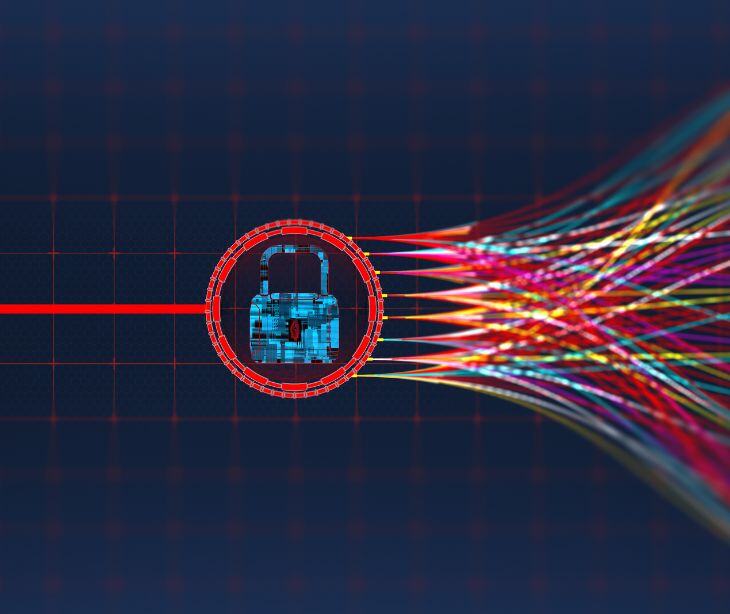
Social engineering attacks are a significant challenge in data security. Hackers use various tactics to infiltrate business databases, impersonate vendors, or gain physical access to restricted areas. Social engineering is involved in most HIPAA breaches, highlighting the need for security measures.
According to the Carahsoft 2021 HIMSS Healthcare Cybersecurity Survey, socially engineered phishing attacks accounted for 45% of security incidents in healthcare systems. In 2023, healthcare organizations encountered a 279% increase in business email compromise (BEC) incidents, proving the frequency and impact of these tactics in the industry.
Popular forms of social engineering attacks
Healthcare organizations face multiple forms of social engineering exploits in a single attack. It is important to comprehend these strategies to implement efficient measures to counter them. Here are some of the most common forms of social engineering attacks:
Phishing
Phishing is the most prevalent form of social engineering attack. It involves hackers using fear and threats to create a sense of urgency, tricking employees into sharing confidential information. Healthcare organizations must educate their staff about the warning signs of phishing emails and discourage them from interacting with suspicious messages.
Pretexting
Pretexting is a scheme where hackers fabricate scenarios to deceive employees and obtain sensitive information. Hackers manipulate employees into divulging confidential data by creating a false narrative or pretext. Healthcare organizations should emphasize the importance of verifying the authenticity of requests before sharing any information.
Baiting
Baiting entices victims with the promise of rewards, such as free downloads or services, to steal login credentials. Healthcare staff should be cautious when encountering offers that seem too good to be true and refrain from downloading files or clicking on links from untrusted sources.
Tailgating
Tailgating involves unauthorized individuals following employees into restricted areas without proper authentication. Healthcare organizations should enforce strict access control measures to prevent unauthorized entry and educate employees about the importance of not allowing others to follow them into restricted areas.
Identity theft
Identity theft occurs when hackers steal an employee's identity to gain online access or create fake ID badges to infiltrate physical spaces. Healthcare organizations should implement strong authentication protocols and regularly remind employees to safeguard their personal information to minimize identity theft risk.
Go deeper:
- Tips on proactive data breach prevention for small healthcare practices
- What is cyber extortion in healthcare?
- Email cyber threats 101: Types and tactics
The threat from within
In addition to external hackers, healthcare organizations must also be wary of insider threats. Hackers can coerce or hire disgruntled employees to exploit their physical access to the organization and sensitive data.
This attack is particularly potent as these employees can move around freely and access company information without arousing suspicion. To mitigate this risk, healthcare organizations should implement stringent access controls, monitor employee behavior, and foster a positive work environment.
Staying one step ahead
As hackers continually evolve their social engineering tactics, healthcare organizations must remain vigilant and adapt their security strategies accordingly. Here are some key safeguards to reinforce:
Untrusted sources
Caution employees against opening emails from unknown or suspicious senders, as they may contain phishing attempts or malware.
Be skeptical
Educate employees to exercise caution when encountering offers or messages that appear too good to be true, as they often turn out to be social engineering ploys.
Secure devices
Encourage employees to lock their laptops and secure their devices when not in use to prevent unauthorized access.
Read and understand the company privacy policy
Familiarize employees with the organization's privacy policy to ensure they understand their obligations and responsibilities regarding data security.
Avoid hasty reactions
Remind employees not to act impulsively when confronted with urgent requests, as hackers thrive on exploiting quick decision-making without thorough consideration.
Exercise suspicion
Train employees to be cautious when receiving unsolicited messages, especially those requesting sensitive information or offering unexpected assistance.
Exercise caution
Warn employees to be vigilant when downloading files from the internet, as malicious software can be disguised as legitimate downloads.
Beware of foreign offers
Emphasize that offers from unknown foreign sources should be treated with skepticism, as they are often associated with fraudulent activities.
Delete requests
Encourage employees to delete any requests for financial information or passwords, as reputable organizations would not request such information via email or unsolicited messages.
Reject requests
Instruct employees to be wary of requests for assistance or offers of help, as these can be part of a social engineering scheme.
Set spam filters
Advise employees to set their spam filters to the highest level to minimize the risk of phishing emails and other unsolicited messages reaching their inboxes.
Encourage questioning and verification
Foster a culture of inquiry and encourage employees to ask questions and verify the legitimacy of requests before taking action.
In the news
The Department of Health and Human Services’ Health Sector Cybersecurity Coordination Center (HC3) issued a significant advisory on April 5, discussing the persistent threat posed by ransomware to the healthcare sector. Over the past six months, HC3 has documented more than 530 cyber attacks targeting U.S. healthcare, with nearly half attributed to ransomware. In response to escalating risks, HC3 also released recommendations to fortify defenses against sophisticated social engineering tactics specifically targeting IT help desks within healthcare settings.
FAQs
What is social engineering and how does it relate to healthcare security?
Social engineering is a tactic used by cybercriminals to manipulate individuals into divulging confidential information or performing actions that compromise security. In healthcare, social engineering exploits trust and human psychology to gain unauthorized access to patient data, medical systems, or financial information.
Why is social engineering a significant threat to healthcare organizations?
Social engineering is a big threat because it targets the human element, which is often the weakest link in cybersecurity defenses. By exploiting trust, deception, or fear, attackers can trick healthcare employees into disclosing sensitive information, clicking on malicious links, or transferring funds, leading to breaches of patient confidentiality, financial losses, and disruptions in healthcare services.
What measures can healthcare facilities take to prevent social engineering attacks?
Healthcare facilities can prevent social engineering attacks by implementing cybersecurity training for staff at all levels, raising awareness about common social engineering tactics such as phishing, pretexting, and baiting, encouraging skepticism and verification of requests for sensitive information or transactions, and establishing strict protocols for handling confidential data and financial transactions.
How does social engineering impact HIPAA compliance?
Social engineering impacts HIPAA compliance by increasing the risk of unauthorized access to protected health information (PHI). If attackers successfully manipulate staff through social engineering tactics, they can gain access to PHI, leading to potential data breaches and violations of HIPAA’s security and privacy rules.
Subscribe to Paubox Weekly
Every Friday we'll bring you the most important news from Paubox. Our aim is to make you smarter, faster.




